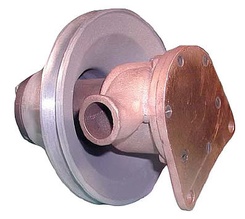back to site
Call us: 1-800-810-1053
Manufacturers
View all manufacturers →- Myers
- Neptune Metering Pumps
- Nomad
- Oberdorfer
- PACO
- Prosser
- Pulsafeeder
- Pulsatron
- Shakti
- Stancor
- STA-RITE
- Summit Pumps
- Don’t See What You’re
Looking for?Request a Quote - Thinqk
- US Seal MFG
- Walchem
- Warren-Rupp Sandpiper
- WEG
- Weinman
- Wilden
- Yamada
- Don’t See What You’re
Looking for?Request a Quote
Applications
View all applications →- Acids
- Aerospace
- Agriculture
- Air Scrubbers
- Aquariums / Zoos
- Aquatic
- Automotive
- Baitwell
- Ballast Transfer
- Basement Draining
- Boiler Feeds
- Bulk Plant Services
- Chemical Delivery / Processing
- Chemical Delivery / Transfer
- Chemical Metering
- Chillers / Hot Water Systems
- Circulation
- Commercial
- Condensate Return
- Cooling Circuits
- Cooling Systems / Misters
- Cooling Tower
- Cooling Water Systems
- Corrosives
- De-Icing
- Dewatering
- Dialysis Solutions
- Diesel Exhaust Fluid
- District Heating
- Draining Ditches / Pits / Trenches
- Effluent / Dosing Systems
- Effluent Transfer
- Electronics
- Embalming
- Environmental
- Evaporative Systems / Misters
- Farming
- FDA Compliant
- Filtration Systems
- Fire Fighting
- Fire Sprinklers
- Flammable Liquids
- Flood & Pollution Control
- Food & Beverage Services
- Food Processing
- Fountains
- Fracking
- Fueling Systems
- Gas & Petroleum
- General Purpose
- General Water Services
- Glycol Transfer
- Heat Exchangers
- High Temperature
- High Viscosity
- Home & Farms
- HVAC
- Ice Making
- Industrial
- Industrial Processes
- Injection Molding
- Labratories / Research
- Landfill Services
- Lift Stations
- Liquid Transfer
- Livestock Watering
- Low Pressure Pipe Systems
- Machining
- Manufacturing
- Marine
- Mining
- Mobile Home Parks & Motels
- Mound Systems
- Municipal
- Municipal Drinking Water
- Municipal & Subdivision
- OEM Applications
- Oil Based
- Oil Change / Transfer
- Paints & Dyes
- Petrochemical
- Pharmaceutical / Chemical
- Plating
- Pool & Spa
- Potable Water Boosting
- Powder Transfer
- Printing & Ink
- Pulp & Paper
- Pure Water Systems
- Recirculation
- Refrigeration & Air Conditioning
- Residential
- Reverse Osmosis
- Road Saw
- Rural Water Districts
- Sampling
- Schools & Hospitals
- Septic / Sump
- Septic / Sump Tank
- Sewage / Wastewater
- Shallow Well
- Slurry Transfer
- Snow Making
- Solution Transfer
- Solvents
- Spray Systems
- Sprinkler / Irrigation
- Stone / Clay / Glass
- Sump Services
- Tailwater Recovery & Reuse
- Tank Car
- Tank Filling
- Temperature Control
- Textile Industry
- Utilities
- Washing / Cleaning Systems
- Wastewater / Trash / Sewage
- Wastewater Treatment
- Water Displays
- Water Parks
- Water Purification
- Water Supply
- Water Transfer
- Water Treatment
- Water Truck Pumps
- Wells
- Wells / Deep Well
Types
View all types →- Accessories
- Acids
- Agriculture
- Air Cooled
- Base Mount
- Basins / Packages
- Bilge
- Boiler Feeds
- Booster
- Bottom Suction
- Carbonator Mount
- Centrifugal
- Chemical Delivery / Processing
- Chemical Delivery / Transfer
- Chemical Metering
- Close Coupled
- Controllers
- Cooling Water Systems
- Dampener
- Diaphragm Pumps
- Drainage
- Drum
- Effluent
- Ejector
- End Suction
- Engine Driven
- Fire
- Flange Mount
- Flexible Impeller
- Fountain Pumps
- Gas Engine Drive
- Gas & Petroleum
- Gear
- Glycol Transfer
- Grinder
- Heliarc
- Helical
- High Pressure
- High Viscosity
- Horizontal Multistage



